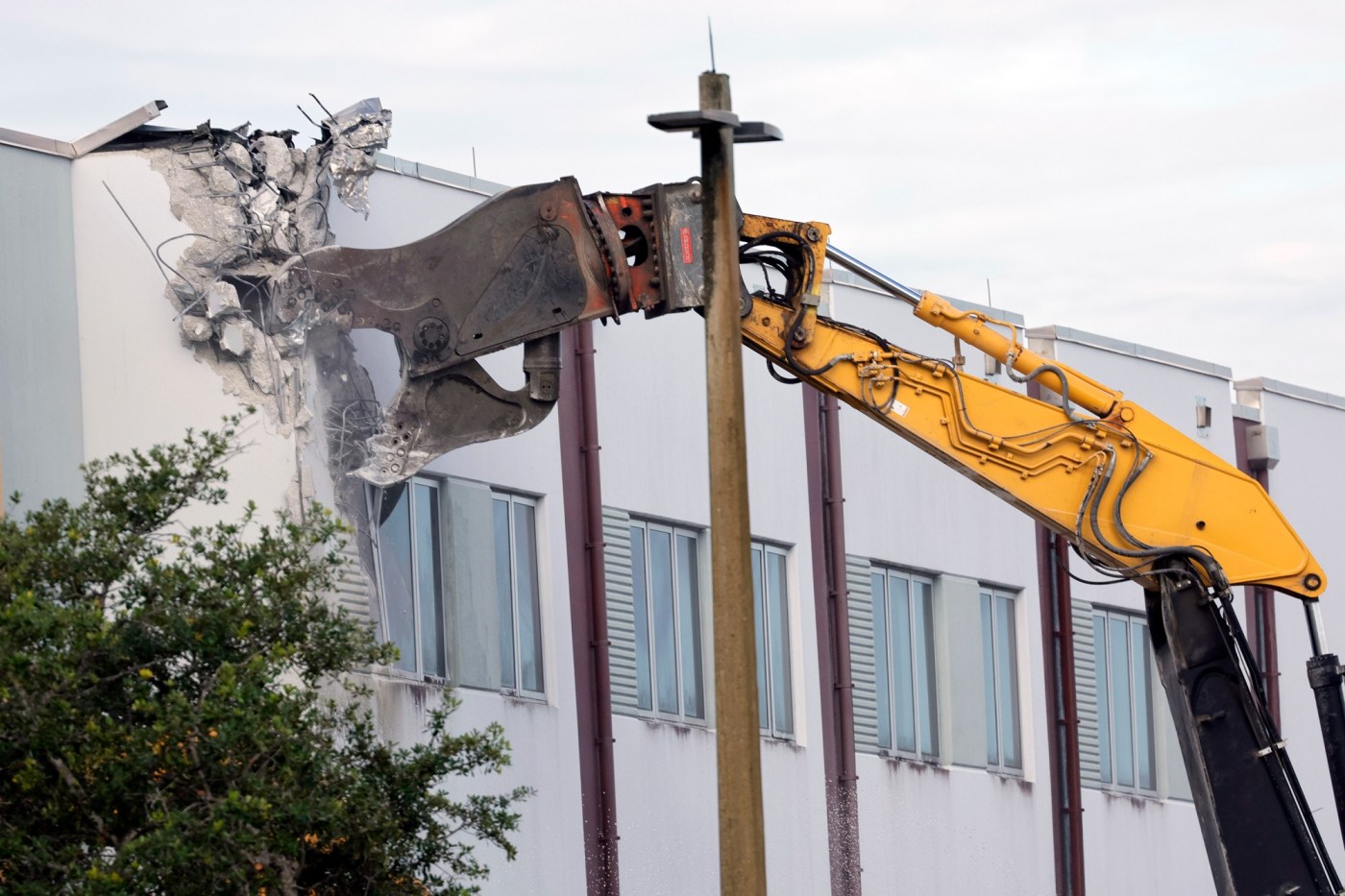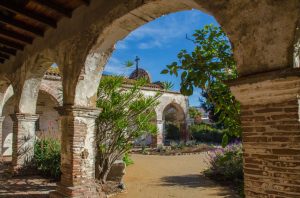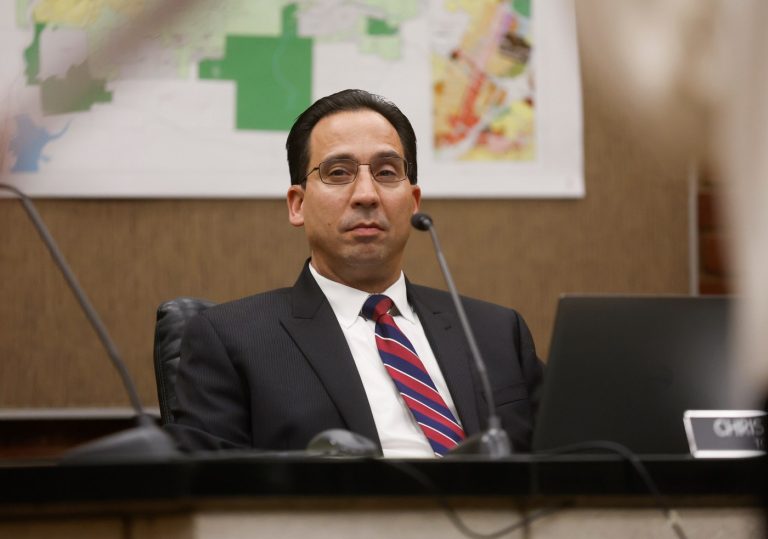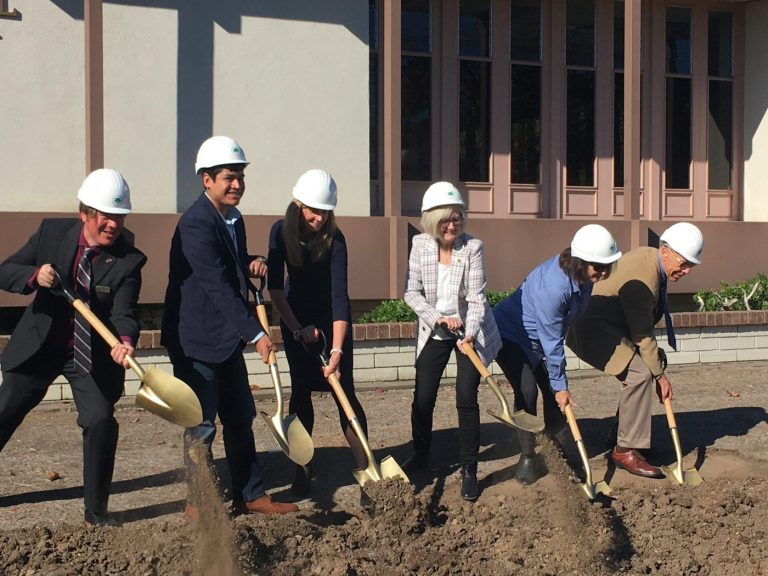PARKLAND, Florida — With a groan, the classroom building where 17 people died in the 2018 Marjory Stoneman Douglas mass shooting began to come down Friday morning in chunks of metal, concrete, and dust.
Two white tents stationed about 100 yards away protected victims’ family members from the sun during the scheduled demolition, while a yellow excavator clawed away at the building’s corner. Some filmed it on their phones. Some cried. Outside the fence, former students, teachers and neighbors came to watch, stopping by on bicycles, sitting in lawn chairs.
For years they had known this day would come, but still could not have predicted how it would feel.
“To me, whether the building’s here or whether it’s not, I will always remember this space,” Max Schachter, whose 14-year-old son, Alex, was killed in the building, told reporters after the initial demolition began Friday. “I will always remember the horrific images in my head that I saw walking through that building, knowing the pain that Alex was going through when he was shot and murdered by the Parkland school shooter. So there’s no closure for me.”
The 1200 building has served many purposes over the years. It was used as evidence of the shooting itself during criminal trials for the shooter and the accused failures of Scot Peterson, the school resource officer. Later, politicians and officials toured its halls to better understand the urgent need for school safety and the ways things can go wrong. It became a constant reminder for all who passed of what they went through and all that they lost. But it was also a reminder of the place where 17 people once went to school, where, the day before Feb. 14, Alex Schachter was still in band and 14-year-old Alyssa Alhadeff still played soccer.
What appears to be student work can be seen on the wall of teacher Scott Beigel’s third floor classroom as demolition begins on the 1200 Building at Marjory Stoneman Douglas High School in Parkland, the site of the Feb. 14, 2018, massacre where 17 people were killed and another 17 were injured. Beigel was one of the teachers who died. (Amy Beth Bennett / South Florida Sun Sentinel)
So when the excavator began to claw all of it away about 8:30 a.m. Friday, emotions were strong, and mixed.
“I just kept thinking about my daughter Alyssa who was murdered in that building,” said her mother, Lori Alhadeff, now the chair of the Broward School Board, a few hours into the demolition Friday. “When the (excavator) hit the building, it honestly just ignited that pain even further.”
The victims’ families were invited to hammer off a piece themselves if they chose. Officials plan to complete the project before the school’s 3,300 students return in August from summer vacation, though it could be sooner than that. Most of the current students were in elementary school when the shooting happened.
For former students who were at the school at the time, the demolition is a long time coming, but also a bittersweet one.
“I’m really, really anxious,” said Gaby, 22, a high school junior at the time of the shooting who asked that her full name not be used. “And in my heart, it’s really, really sad. I just feel so sad. And I think that’s just because I’m sad from the 14th of February, and that sad never goes away, unfortunately. That’s all I can say.”
Gaby said she almost didn’t come, but friends kept talking about it. She ended up standing across the street Friday morning in cow slippers and pajama pants.
“It’s this big constant,” she said. ” … I wanted it gone the moment it happened. But the fact that it stayed here, it stuck out like a sore thumb. I really really needed that sore thumb sometimes. To cling to a moment in my life where everything got turned upside down.”
A woman clears debris from a memorial garden as demolition begins on the 1200 Building at Marjory Stoneman Douglas High School in Parkland. (Amy Beth Bennett / South Florida Sun Sentinel)
Nearby, Dylan Persaud, who was a freshman at the school in 2018, also watched as the destruction began. Persaud had been standing near the freshman building when the shooting started that day. He lost seven long-time friends and his geography teacher, Scott Beigel, in the shooting.
“It’s the period to the end of the story,” he said. “It’s not closure, but it’s an end.”
For Persaud, there is a sense of relief to seeing the building come down and knowing that those who pass don’t have to see it anymore. He hopes that the space becomes a personal memorial for each of the 17.
Standing in front of reporters, Brian Lequerique, a 2020 graduate from MSD, got choked up.
“Normally I’m not really an emotional person,” he said. But “it gets very emotional at times.”
For Lequerique, who often drives by, watching the building fall brought an end to a very difficult chapter. But it also brought about terrifying memories of being in the Spanish hallway during the shooting.
“It brings you back to that day,” Lequerique said. “I remember the sounds of the fire alarms, screaming and the police coming through the halls with their guns drawn.”
“Six years later I’ve gotten better,” he added. “But driving by brings it all back.”
Some former teachers also came to watch. Joanne Wallace taught special education at Stoneman Douglas at the time of the shooting and for five years after. With mixed emotions she had returned to show her support for the families.
“I wish that more people could see what’s happening,” Wallace said. “But I want to show the families that we still care.”
The building had been kept entirely preserved to serve as evidence at the shooter’s 2022 penalty trial. Jurors toured its bullet-pocked and blood-stained halls, but spared him a death sentence. He is serving a term of life without parole. After the trial, the building was opened up so family members themselves could walk through, as well as visitors.
Many have described the inside as a time capsule of Feb. 14, 2018. Textbooks and laptops sat open on desks, and wilted Valentine’s Day flowers, deflated balloons and abandoned teddy bears were scattered amid broken glass. Those objects have now been removed.
For the families, the building’s painful reminders served an important purpose. They brought politicians and other officials to bear witness. Over the past year, they have led Vice President Kamala Harris, members of Congress, school officials, police officers and about 500 other invitees from around the country on tours of the building.
They showed them what went wrong, and how bullet-resistant glass in door windows, a better alarm system and doors that lock from the inside could have saved lives.
Max Schachter has now walked through the building over 10 times. He still doesn’t feel like there was enough time, that more people could have — should have — seen it.
“It’s excruciatingly painful to see Alex’s blood all over the chair, and to see how he died,” he said Friday. “But what also is upsetting is that I wasn’t able to bring more people, more officials through that building.”
The Parkland tragedy lives on in court as building demolition approaches
Not every parent had wanted to witness the demolition.
“I absolutely will not be there,” Fred Guttenberg, whose daughter, Jaime, was killed, had told the South Florida Sun Sentinel earlier in the week. “You know what, I spent enough time in that building over the past year, walking congressional leaders and law enforcement leaders through it to teach the lessons. I’ve been in the spot where my daughter was killed … There is no closure for me because no matter what happens at that building I still visit her at the cemetery. There’s closure for community, but there’s no closure for myself or the other 16.”
For those who had to still attend the school and look out at the 1200 building, the painful reminders were hard to navigate each day.
Melissa Falkowski, the sponsor of the MSD school newspaper, The Eagle Eye, hid 19 students in a closet on Feb. 14, 2018.
Six years later, still teaching at the school, she hopes to see the demolition bring about a fresh start for the new set of students to attend MSD.
“We’ve been working in the shadow of this building,” Falkowski said. “The students park in that lot and have to walk past it every day … for six years we’ve been witnessing a monument to mass murder. It needed to happen a long time ago, but it finally happened today.”
Eric Garner, who teaches broadcast journalism at the school, said that each year, students have fainter memories of the tragedy, many having been only in elementary school at the time. His students used to never even talk about going to “shoot” video, but now things are slowly becoming more normal.
“It’s probably healthier for us,” Garner said. “But it is absolutely a mixed feeling. It’s almost that we need the students to understand it sometimes.”
Broward County is not alone in taking down a school building after a mass shooting. In Connecticut, Sandy Hook Elementary School was torn down after the 2012 shooting and replaced. In Texas, officials closed Robb Elementary in Uvalde after the 2022 shooting there and plan to demolish it. Colorado’s Columbine High had its library demolished after the 1999 shooting.
U.S. Rep. Jared Moskowitz, an alumnus of the school who also led many on tours of the building, said in a statement Friday that the community was forever changed by the shooting.
“I never thought I’d see the high school where I graduated from turned into a war zone. What I’ve seen in that building is truly haunting — windows with bullet holes, homework scattered everywhere, blood in the hallway,” Moskowitz said. “The people of Parkland will no longer have to pass by this horrific reminder of our grief. The families of those innocent lives taken that day will never be able to move on, just move forward.”
The Broward County School Board has not decided what the building will be replaced with. Teachers suggested a practice field for the band, Junior ROTC and other groups, connected by a landscaped pathway to a nearby memorial that was erected a few years ago. Several of the students killed belonged to the band or Junior ROTC.
Alhadeff wants the grounds turned into a legacy soccer field, in memory of Alyssa, a soccer player. Many parents agreed that they want the site turned into a memorial.
Tony Montalto, whose 14-year-old daughter Gina died that day, said he was worried about not knowing exactly what will happen to the space left behind by the building. He hopes it reflects the lives his daughter and others lived, not something that “memorializes the day they were taken.”
Even within his own family, reactions to the demolition were mixed, reflecting the larger constellation of emotions felt by the community. His wife had grown attached to the building. His son was afraid that people will now forget.
Speaking to reporters Friday, Montalto recalled all the times he drove past with Gina, including before she entered high school, during the initial craze over the movie “High School Musical.”
“She’d say, ‘Look, Daddy, there’s my high school musical,’” he said, tearing up, while the groans and creaking of the building coming apart could be heard behind him. “I always hear her voice when we drive down this road.”
Information from the Associated Press was used in this report.












